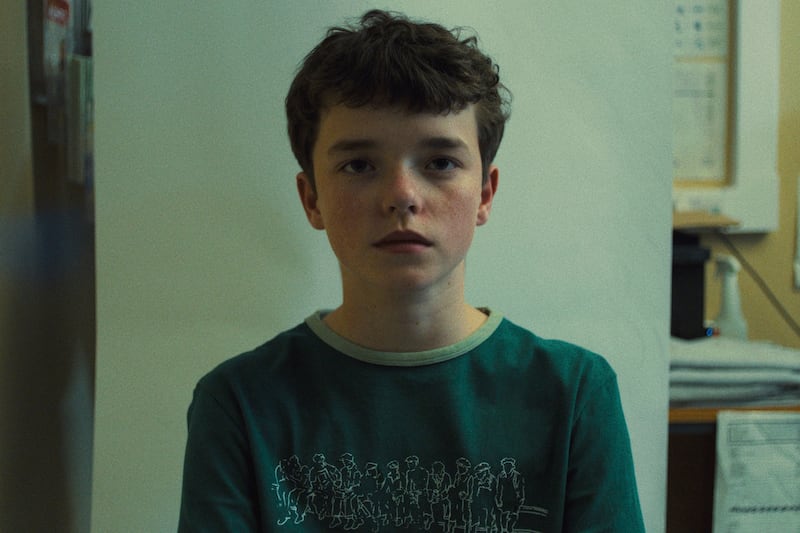Last week, Trinity College Dublin decided to take the name of the great 18th-century philosopher George Berkeley off its main library. This raises the more awkward question of all the GAA clubs named after another advocate for chattel slavery, John Mitchel.
It is probably true that most Irish people don’t know or care much about Berkeley — which makes “denaming” a university library relatively painless. Confronting the truth about Mitchel, a hero of the Irish national struggle, is a lot tougher, and therefore all the more necessary.
The kidnapping, enslavement and transportation to the Americas of about 12.5 million African people are at the heart of western modernity. Its consequences are very much alive today — we cannot understand ourselves or our world if we ignore them.
In October 1857 Mitchel co-founded a newspaper, the Southern Citizen, to promote ‘the value and virtue of slavery, both for negroes and white men’
Three Irish figures were important in promoting and sustaining white supremacist ideology in North America. One was Berkeley, who purchased human beings to work his small plantation in Rhode Island and, more influentially, argued that slavery was entirely compatible with Christian conversion: “slaves would only become better slaves by being Christian”.
The second was John Calhoun, the most eloquent and potent advocate of slavery in the US government and Senate in the decades before the civil war. Calhoun grew up on the plantation established in South Carolina by his father Patrick, who had emigrated from Donegal.
[ What does the ‘denaming’ of Trinity’s Berkeley Library mean?Opens in new window ]
The third was Mitchel — Irish revolutionary, enthusiastic racist and extreme advocate of the slaveholding cause. He used the rhetorical skills honed in his Irish nationalist activism to, as he put it, “deny that it is a crime, or a wrong, or even a peccadillo, to hold slaves, to buy slaves, to keep slaves to their work by flogging or other needful coercion”.
Mitchel, then, did not merely propagandise for slavery as an institution. He encouraged the use of torture to keep enslaved people in line.
He didn’t just defend the status quo as he found it in the American South. He wanted to expand it.
In the civil war, Mitchel was a fanatical Confederate. He was so extreme that he even broke with the leadership of the Confederacy
In October 1857 Mitchel co-founded a newspaper, the Southern Citizen, to promote “the value and virtue of slavery, both for negroes and white men”, to press for the reopening of the African slave trade and to encourage the spread of slavery into the American West.
In the civil war, Mitchel was a fanatical Confederate. He was so extreme that he even broke with the leadership of the Confederacy: he regarded them as too soft because they did not approve attacks on pro-Union civilians, and not racist enough because they wanted to recruit Black soldiers — an affront, as he saw it, to the purity of the cause.
Mitchel’s white supremacist zealotry exacted a terrible personal price. Of his three sons, John and Willie were killed fighting for the Confederacy and James was maimed in the same cause, suffering multiple wounds and losing an arm. But Mitchel considered this a worthy sacrifice.
None of this diminished Mitchel’s heroic reputation back home. In the early years of the GAA, there was a vogue for naming hurling and football clubs in his honour.
Many of these names survive. There are GAA clubs called (with slight variations) “John Mitchels” in Tralee; in Kilmacthomas, Co Waterford; in Belfast; in Solihull (outside Birmingham); in Liverpool; in Claudy, Co Derry; in Castlebar; in Magheracloone, Co Monaghan and in his native Newry (where there is also a statue of Mitchel).
Why does this matter now? First, because Mitchel, as a brilliant political journalist and propagandist, was hugely influential in creating the ideology of modern Irish nationalism.
His version of that ideology was that Ireland should be free, not because national freedom is a universal right, but because the Irish are white. One of the founders of the State, Arthur Griffith, idolised Mitchel for this very reason.
Griffith paid homage to Mitchel’s “essential work of dissevering the case for Irish independence from theories of humanitarianism and universalism”. He indignantly denied that Mitchel’s racism needed to be excused “as if excuse were needed for an Irish Nationalist declining to hold the negro his peer in right.” He praised Mitchel for liberating the cause of Irish nationhood from “the theory that black equals white”.
Retaining Mitchel’s name belies the GAA’s standing as one of Irish society’s greatest assets in the fight against racism and xenophobia
This racist configuration of Irish nationalism as a quintessentially white identity is flourishing right now on the far right in Ireland and Irish-America. Mitchel is its ideological fountainhead.
More specifically, retaining Mitchel’s name belies the GAA’s standing as one of Irish society’s greatest assets in the fight against racism and xenophobia. County players like Boidu Sayeh of Westmeath, Wexford captain Lee Chin, Jemar Hall of Armagh and Ikem Ugwueru of Clare embody the association’s much wider ethic of inclusion.
As Trinity’s experience shows, it is possible to reconsider historic names without rancour and in a way that engages a community in a positive reflection on its past and present identities. The GAA has so much to be proud of that its clubs do not need to feel ashamed of having to rethink what they call themselves.
Continuing to honour a fanatical racist through the names of some clubs dishonours the GAA’s immensely important achievement in breaking the chains that bind Irish local and national identities to toxic notions of racial superiority. It literally gives good clubs a bad name.
















